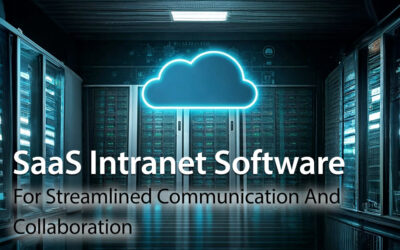The digital transformation of business operations is becoming increasingly important. A CMS intranet platform can be an invaluable tool for organizations looking to tap into these digital transformation trends. By providing a secure shared space where company data and documents can be accessed, an intranet platform can facilitate collaboration and improve transparency between teams. Within the workplace, digital transformation statistics show that utilizing a CMS intranet solution has numerous benefits, from increasing employee productivity to reducing operational costs. Considering the potential digital transformation offers, embracing a CMS intranet platform could be just what your organization needs to take its operations to the next level.
Implementing a CMS Intranet, whether you are looking to provide employee engagement software for the first time or simply need to update your current solution, is not a small task. More likely than not, months will pass between the initial engagement with a potential provider and adoption by your employees.
To maximize your success and adoption rate, streamlining the process is crucial. And to ensure that the implementation proceeds as smoothly as possible here are six resources – both human and capital – you should consider and clarify before starting the process of getting your new intranet.
1) The Core Implementation Team

Ideally, every stakeholder group within your company should have at least one representative within this team. Upper management should naturally be involved, as should marketing – after all, the final software will be a crucial internal communications tool. A representative from Human Resources ensures that everything complies with workplace rules and regulations while a member of your IT department will put into context the technical requirements of the software and how it will integrate with your current system. If you chose a cloud-based intranet solution, you might not require input from IT at all depending on how your organization is structured.
Finally, be sure to include at least one employee in your core implementation team that does not have any affiliation with the above department. Doing so will have multiple benefits. Not only will you get a valuable perspective on how your employees will treat the new software, but you will also gain advocates of the new intranet among your employees that will ultimately help your adoption.
2) Your Available Budget

Don’t make the mistake of assuming that the cost of the actual solution will be the only budget you need during the implementation process. As anyone who has gone through a major software implementation knows, you will have to account for additional costs, which may include consulting hours, training hours for your employees that are outside of regular work hours, potential additional temporary positions to help smooth the transition and more.
Ultimately, your core implementation group should discuss and determine how the available budget can be spent most effectively in getting an intranet solution that works for your business. Adjustments will naturally occur during the implementation process, but having at least a tentative plan for your money can go a long way toward keeping you on track.
3) Time Commitments of Core Team Members

Having a plan in place for how work will get done in their areas during this time frame helps keep your organization on track while it implements this major internal communication software. Considering these additional time commitments as a resource to be planned for early in the process helps you adapt and adjust as necessary to ensure a continuous, natural flow of work within your company.
4) Stakeholder Communications
Throughout the implementation and adoption process, you will want to communicate with all stakeholders about the progress and the software’s benefits. In the case of a CMS intranet, these stakeholders include nearly all, if not all employees within your company who will use the new software, along with all members of senior leadership who are sponsoring the project in addition to being future users.

Similarly, upper management will want to be informed about the progress of the project at all times. Depending on the intranet solution you choose, it will be a major budget commitment, which requires buy-in from executive leadership throughout the process. A communication plan helps to keep all stakeholders engaged and optimistic about the software.
5) Employee Training Time
For your employees to embrace a new way of doing their daily work, training time is absolutely crucial. If they feel unfamiliar or uncomfortable with the software at hand, they will revert to the old way of doing things, ignoring your shiny new intranet in the process.

Hopefully, the intranet solution you and your core implementation team decided on earlier is intuitive enough that no extensive training will be needed. But you should never rely on that hope, instead ensuring that your employees can use software features like collaboration tools, file attachment, and other productivity enhancements through effective training.
6) Post-Implementation Resources
Finally, your new CMS intranet will not stop requiring resources once the implementation and training are complete. Your IT department may perform regular updates and maintenance; new employees will need to be trained as part of the onboarding process, and you may realize the necessity for additional features as you begin to use the platform.
Knowing what will come is almost impossible. But you can plan contingencies into your communication plan, from an emergency budget pocket to personnel resources of platform maintainers after the implementation. Doing so enables you to not just successfully implement your intranet, but also ensure that it keeps working, functions well for your employees, and enhances productivity for months and years to come.
The Importance of Strategic Implementation

Establishing a core implementation team in charge of all major decisions, along with determining and allocating your budget, evaluating time commitments for core team members, laying out stakeholder communications, allowing time for employee training and keeping in mind the necessary estimated post-implementation resources are all major resource considerations you and your team should discuss and decide on before embarking on the project.
To learn more about CMS intranets, their benefits, and implementation best practices, contact us. By using MyHub, you will not only be able to track fast your new intranet but will also be able to remove a lot of the costs mentioned in this post mostly associated with traditional intranet deployments.







0 Comments